
William J. Rothwell - Effective Succession Planning (2005)(3-e)(en)
.pdf
258 |
CLOS ING TH E ‘‘ DEVE LO PME NTAL GAP ’’ |
|
|
to spend the time and mental effort needed to conjure up a richer storehouse of alternatives from which to choose. This hit-and-run approach to problemsolving begets all sorts of oddities.’’1
Succession planning and management can fall victim to the same natural response to which Adams refers: Whenever a vacancy occurs, the organization is confronted with a problem. The ‘‘natural response’’ is to find an immediate replacement. There may also be a tendency to ‘‘clone the incumbent’’—that is, find someone who resembles the incumbent in order to minimize the need to make adjustments to a new person. But replacement is not always appropriate. Consider a replacement unnecessary when any one of the questions listed below can be answered yes. (Review the flowchart appearing in Exhibit 11-1 as a simplified aid in helping with this decision process.)
Question 1: Is the Key Position No Longer Necessary?
A replacement is not necessary when a key position is no longer worth doing. In that situation, a ‘‘key’’ position is no longer ‘‘key.’’ Decision-makers can simply choose not to fill the key position when a vacancy occurs. Of course, if this question is answered no, then a replacement may still have to be found.
Question 2: Can a Key Position Be Rendered Unnecessary by Finding New Ways to Achieve Comparable Results?
A replacement may not be necessary if key work outcomes can be achieved in new ways. In this sense, then, SP&M can be affected by business process reengineering, defined by best-selling authors Michael Hammer and James Champy as ‘‘the fundamental rethinking and radical redesign of business processes to achieve dramatic improvements in critical, contemporary measures of performance, such as cost, quality, service, and speed.’’2 If the organization can reengineer work processes and thereby eliminate positions that were once key to an old process, then replacing a key job incumbent will be unnecessary. In short, key positions may be reengineered out of existence.
To that end, try applying the model suggested by Rummler and Brache to process improvement3:
1.Identify the critical business issue or process that is to be reexamined.
2.Select critical processes related to the issue or subprocesses.
3.Select a leader and members for a process improvement team.
4.Train the team on process improvement methods.
5.Develop ‘‘is’’ maps to show the relationship between where and how work flows into a system, how it is transformed through work methods, and where it goes when the products or services are provided to the ‘‘customers.’’
(text continues on page 265)
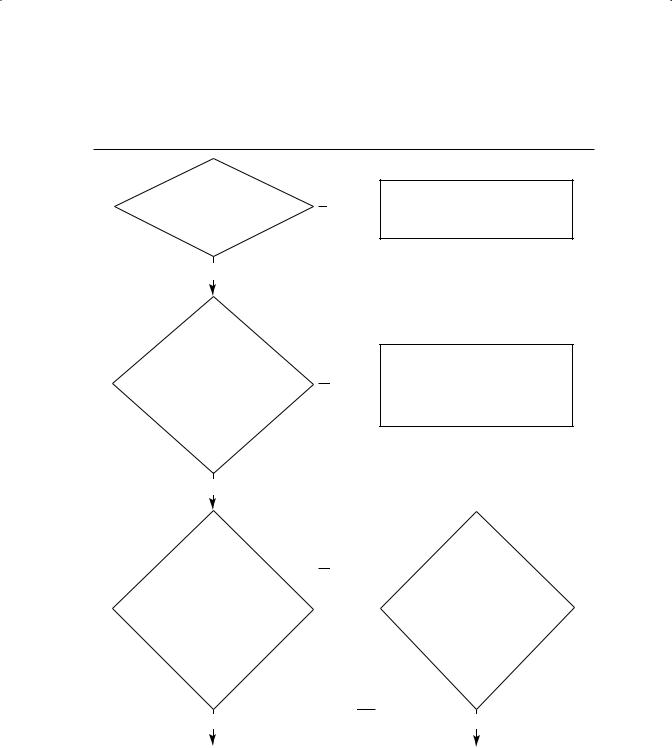
Assessing Alternatives to Internal Development |
259 |
|
|
Exhibit 11-1. Deciding When Replacing a Key Job Incumbent Is Unnecessary: A Flowchart
Is the key position no longer necessary?
No
Can a key position be rendered unnecessary by finding new ways to achieve comparable results?
No
Can a key position be rendered unnecessary by redistributing the duties to a team in the same part of the organization?
No
Yes 
Yes 
Yes 
 No
No
Do not fill the key position. Leave it vacant.
Do not fill the key position. Apply reengineering to achieve the same results.
Are the members of the same part
of the organization capable of working together as a team?
Yes
(continues)
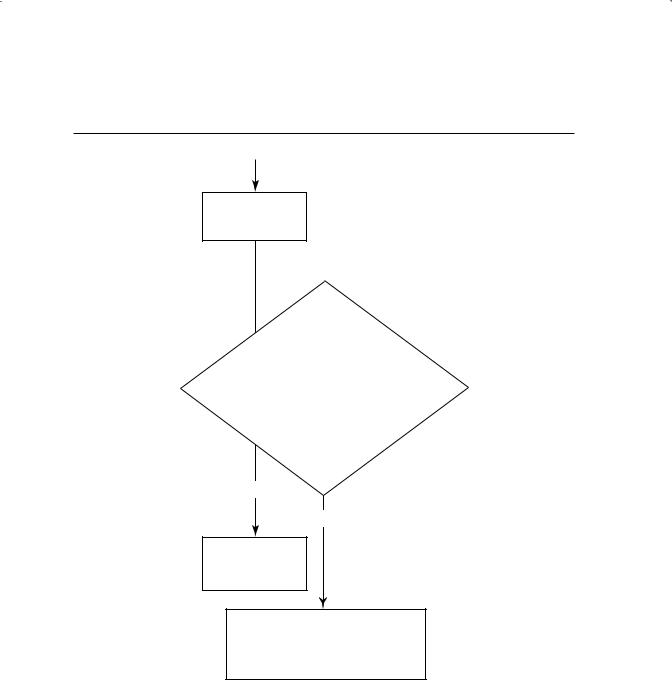
260 |
CLOS ING TH E ‘‘ DEVE LO PME NTAL GAP ’’ |
|
|
Exhibit 11-1. (continued)
Use team building.
Are members of
the same part of the organization capable of absorbing the extra duties without sacrificing productivity in their present job duties?
No
Yes
Review work priorities.
Form team(s) and do not replace the key position.
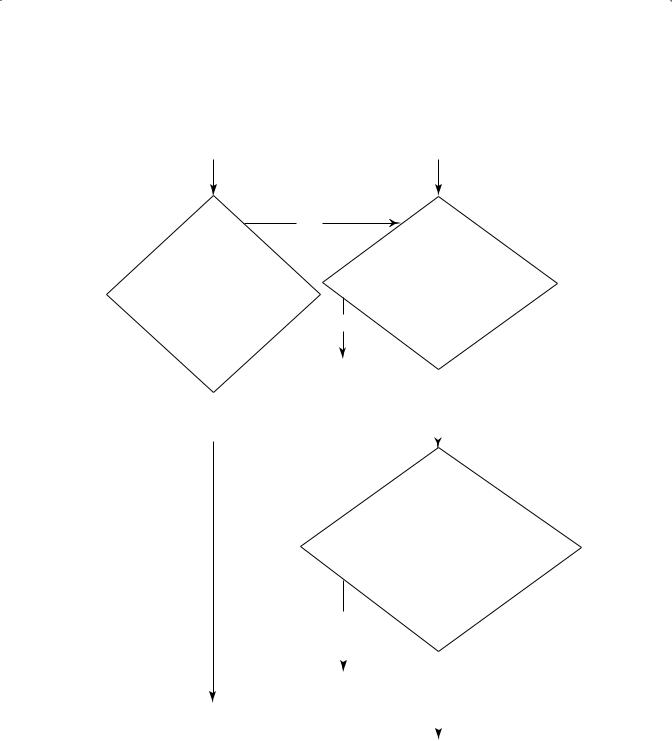
Assessing Alternatives to Internal Development |
261 |
|
|
Yes
Can a key position be rendered unnec-
essary by reallocating the duties to other
parts of the No organization?
Do members of other parts of the
organization possess the neccessary expertise to carry out the work?
|
|
Provide |
|
|
|
|
|
|
|
|
|
training if |
|
|
|
|
Yes |
||
|
|
time allows. |
||
|
|
Otherwise, |
|
|
No |
|
|
||
use another |
|
|
||
|
|
approach. |
|
|
|
|
|
|
|
Are members of another part of the organization capable of absorbing the extra duties without sacrificing productivity in their present job duties?
No
|
|
|
|
|
|
|
|
|
|
|
|
|
|
|
Review work |
|
|
||
Yes |
||||
priorities. |
||||
|
|
|||
|
|
|
|
|
|
|
|
|
|
(continues)

262 |
CLOS ING TH E ‘‘ DEVE LO PME NTAL GAP ’’ |
|
|
Exhibit 11-1. (continued)
Can a key position be rendered unnecessary by outsourcing the work?
No
Reallocate the work of the key position to another part of the organization.
Is the work critical to Yes  the continued survival
the continued survival
of the organization?
Yes
No
Replace the key position incumbent.
Is organizational control essential to meeting stringent work or quality requirements?
Yes
 No Replace the
No Replace the
key position incumbent.
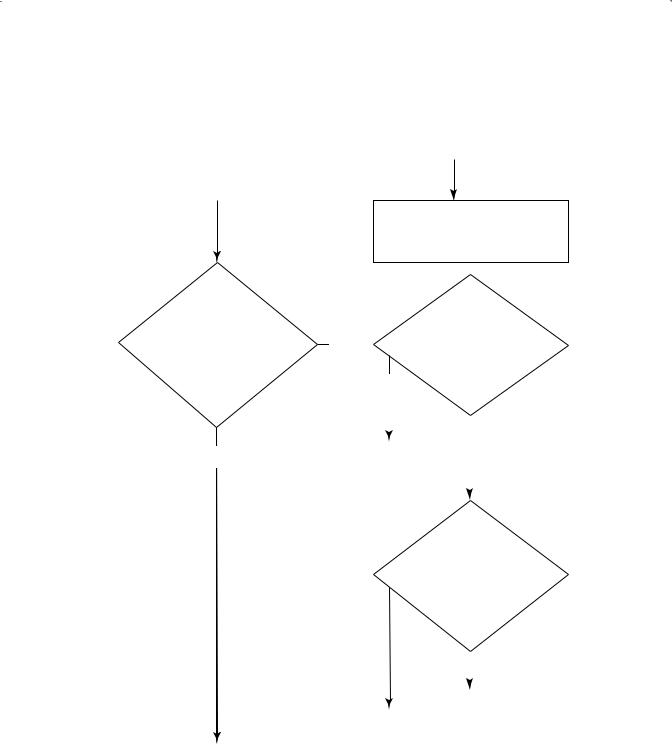
Assessing Alternatives to Internal Development |
263 |
|
|
Can a key position be rendered unnecessary by using flexible staffing approaches?
No
Outsource the job duties of the key position.
Is the work critical to Yes  the survival of the
the survival of the
organization?
Yes
|
|
|
|
|
|
|
|
|
|
|
|
|
|
|
|
|
|
|
|
|
|
|
|
|
|
|
|
|
|
|
|
No |
|
||
|
|
|
|
|
|
||||||
|
Replace the |
|
|
|
|
|
|
||||
|
key position |
|
|
|
|
|
|
||||
|
incumbent. |
|
|
|
|
|
|
||||
|
|
|
|
|
|
Is organizational |
|||||
|
|
|
|
|
|
||||||
|
|
|
|
|
|
control essential to |
|||||
|
|
|
|
|
|
meeting stringent |
|||||
|
|
|
|
|
|
work or quality |
|||||
|
|
|
|
|
|
requirements? |
|||||
|
|
Yes |
|
||||||||
|
|
|
|
|
|
|
|
|
|||
|
|
|
|
|
|
|
|
|
|
|
|
|
|
|
|
|
|
|
|
|
|
|
|
|
|
|
|
|
|
|
|
|
|
|
|
|
|
|
|
|
|
|
|
No |
|
|
|
|
|
|
|
|
|
|
|
|
|
|
|
|
|
|
|
|
|
|
|
|
|
|
|
|
|
|
|
|
|
Use flexible staffing |
|||||
|
|
|
|
|
|
||||||
Replace the |
|
|
approaches to achieve |
||||||||
key position |
|
|
the results desired from |
||||||||
incumbent. |
|
|
the key position. |
||||||||
|
|
|
|
|
|
|
|
|
|
|
|
(continues)
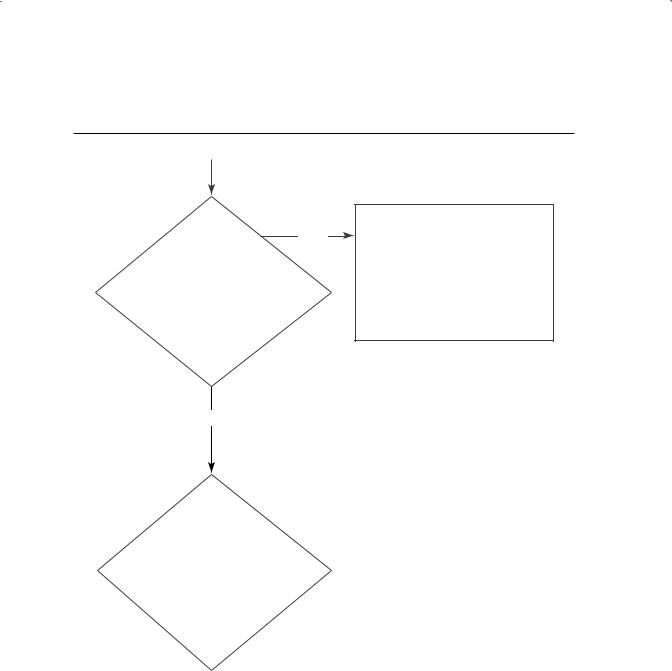
264 |
CLOS ING TH E ‘‘ DEVE LO PME NTAL GAP ’’ |
|
|
Exhibit 11-1. (continued)
Yes
Can combining the approaches listed above render unnecessary the need for a replacement in a key position?
No
Use the traditional approach to succession planning, striving to replace the key job incumbent—probably from within.
Decide which strategies to combine. Divide up work requirements as necessary and use different strategies to meet them. Do not replace the key position incumbent.

Assessing Alternatives to Internal Development |
265 |
|
|
6.Find ‘‘disconnects,’’ which are missing, redundant, or illogical factors that could affect the critical business issue or the process.
7.Analyze the disconnects.
8.Develop a ‘‘should’’ map to present a more efficient or effective method of handling the work.
9.Establish measures or standards for what is desired.
10.Recommend changes.
11.Implement the changes.
In essence, the same steps described above can be used to determine whether there are ways to ‘‘engineer a key position out of existence.’’ If there is, then no successor will be needed. (However, the work process may be broken up and reallocated, necessitating new competencies for those who absorb the new duties.)
Question 3: Can a Key Position Be Rendered Unnecessary by Redistributing the Duties to a Team?
If the answer is yes, then it should be possible to achieve the same work results by placing responsibility in a team of workers from the same function or work unit. However, two caveats should be considered. First, if the workers have never functioned as a team, then they will probably require team-building and training on team skills to work as a cohesive group. Second, if prospective team members are already working at—or beyond—their individual capacities, then loading additional duties on a team will not be successful.
Question 4: Can a Key Position Be Rendered Unnecessary by Reallocating the Duties to Other Parts of the Organization?
In short, is it possible to avoid filling a key position by reorganizing, moving the work responsibility to another function or organizational unit? If the answer is yes, then replacing a key job incumbent may prove to be unnecessary. But, as in redistributing work to a team in the same part of the organization, assess whether the inheritors of key position duties are trained adequately to perform the work and can do them without sacrificing productivity in their present jobs. If both conditions can be met, consider moving responsibilities to another part of the organization to avoid replacing a key job incumbent.
Question 5: Can a Key Position Be Rendered Unnecessary by Outsourcing the Work?
If the answer is yes, then replacing a key job incumbent may be unnecessary. The same results may be achieved more cost-effectively than by replacing a key job incumbent. Pay particular attention to two key issues when answering the question: criticality and control. If the work is critical to the continued sur-

266 |
CLOS ING TH E ‘‘ DEVE LO PME NTAL GAP ’’ |
|
|
vival of the organization, then outsourcing it may be unwise because that may vest too much influence in an individual or group having little or no stake in the organization’s continued survival. If the work must meet stringent, specialized requirements for which few external sources can be found, then outsourcing may also prove to be unwise because controlling the activities of an external contractor may become as time-consuming as performing the work in-house.
Question 6: Can a Key Position Be Rendered Unnecessary by Using Flexible Staffing Approaches?
Can the same results be achieved through the use of permanent part-time or temporary part-time staff, rotating employees, or internships? If the answer is yes, then replacing a key job incumbent may be unnecessary. However, as in outsourcing, pay attention to criticality and control. If the work is critical to the continued survival of the organization, then using innovative staffing approaches may prove to be unwise because that will grant too much influence to an individual or group with little or no stake in the organization’s existence. If the work must meet stringent, specialized requirements that require mastery, then part-time talent may not be able to achieve or maintain that mastery.
Question 7: Can Combining the Approaches Listed Above Obviate the Need for a Replacement in a Key Position?
In other words, is it possible to split apart the key results or outcomes desired from the key position and handle them separately—through reengineering, team-based management, organizational redesign, or other means? If that question can be answered yes, then it should be possible to ensure that the organization achieves the same results as those provided by the key job incum- bent—but without the need for a replacement. Use the worksheet in Exhibit 11-2 to decide when it is possible to answer yes to any one—or all—of the questions listed above.
Innovative Approaches to Tapping the Retiree Base
Succession planning and management is not an all-or-nothing proposition. It is also possible to meet staffing needs to get the work done by tapping the very group that is causing some of the problems—that is, baby boomers who are nearing retirement. And that is also not an all-or-nothing proposition in the sense that discouraging people from retiring, while one option, is not the only way to tap into the power of those who are eligible to retire.
The word retire—taken from the Middle French word retirer (which means ‘‘to draw back’’)—is being reinvented now. Much evidence exists to support that.4 Older workers are delaying their retirement due to a rollercoaster stock market and eroding health insurance coverage, which is (in turn)

Assessing Alternatives to Internal Development |
267 |
|
|
Exhibit 11-2. A Worksheet for Identifying Alternatives to the Traditional Approach to Succession Planning and Management
Directions: Use this worksheet to help you identify alternatives to the traditional approach to succession planning—that is, promoting from within the organization and within the function.
In the first space below, identify by title the key position that you are examining. Then answer the questions about it appearing in the left column of the second space below. Write your responses in the right column, making notes about ways by which you can use alternatives to the traditional approach to succession planning. When you finish, share your responses with others in the organization for their thoughts— and, if possible, to compare their comments to yours. Add paper if necessary.
There are no ‘‘right’’ or ‘‘wrong’’ answers to this activity; rather, the aim is to provide you with an aid to creative ways by which to meet succession planning needs.
Space One: What is the key position? (Provide a job title.)
Questions About the Key |
Question Responses |
Position |
(Describe ideas to avoid |
|
simple replacement |
|
from |
|
within.) |
|
|
Is the key position no |
|
longer necessary? |
|
Can a key position be rendered unnecessary by finding new ways to achieve comparable results?
(continues)
